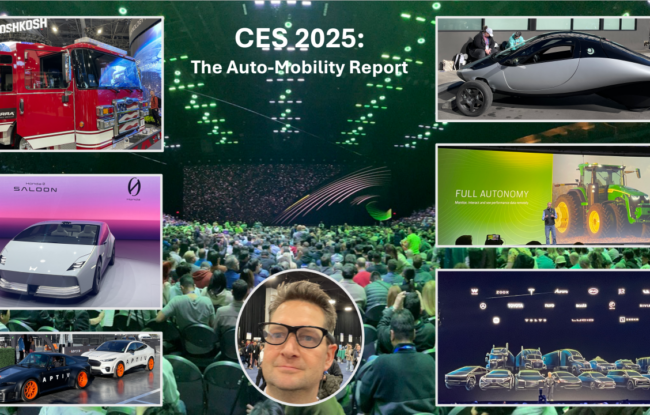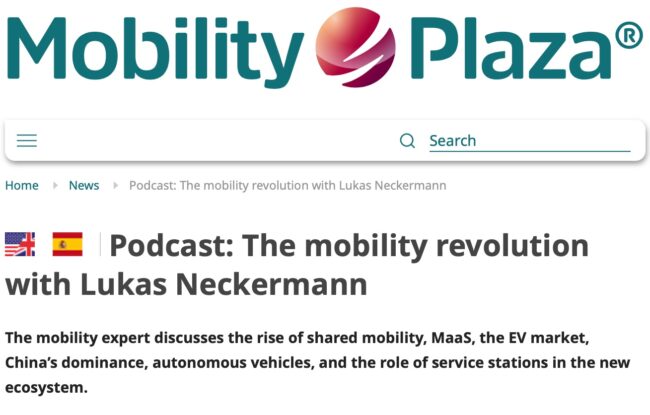This article was first published by Generation.e on 04th of June 2020 for the preparation of the Smarter Mobility Europe Live.
Smart mobility is a human-centric industry, but it is not exclusively for people. There is an increasing need to move goods efficiently, and in line with sustainability challenges. New mobility solutions within logistics can make a difference.
Some 30% of all global transportation-related CO2 emissions comes from multi-modal commercial transport (including air-sea-land). This, in turn, represents 7% of the global CO2 emissions across industries (energy production, manufacturing, …). At a European level, urban freight accounts for 25% of the carbon emissions and up to 50% of other pollutants (PM, NOx, etc.).
In terms of congestion, goods transport is responsible for one-fifth of all types of urban trips. Given the space requirement of logistics vehicles, the related effect on traffic flow becomes obvious.
While it is interesting to note the current impact on emissions and congestion, steps taken by the logistics industry today will be meaningful and effective in shaping our future.
Understanding today’s logistics challenges and opportunities for a better and smarter mobility world is one of the many objectives that SME LIVE aims to reach during its 3-day virtual summit. Through case studies, tech talks and panels, speakers and experts will highlight the latest developments in commercial mobility, and explore innovative freight transportation solutions.
Logistics is a large industry including a multitude of different modes of transport for extra- and intra-urban deliveries. Our aim is to shed some light on what is happening in city centres, and address what is called in the industry the “last-mile delivery challenge.”
Neckermann Strategic Advisors, Knowledge Partner of Smarter Mobility Europe, has identified six factors influencing a rise in last-mile delivery challenges:
- Urbanisation: A population growth rate of 1% per year is generally understood to be sustainable, but the reality is different in many growing cities. Many of the largest cities in the world have a growth rate of up to 5%. An ever-growing population increases the pressure on resources and governance, but also on transport capacity, both for people and goods.
- Cost: delivering goods along the last mile is generally the most costly part of the journey, representing over 40% of the overall expenditures. It can be more than double any other category of expense, such as parcelling or warehousing.
- Online shopping: a Capgemini report on last mile delivery found that “40% of consumers use grocery delivery weekly and this number is expected to climb to 55% by 2021”. Concretely, a company such as Alibaba expects to handle 1 billion packages per peak-day within the next decade. COVID-19 has accelerated this trend even more, which will result in increased tension, as deliveries increases.
- COVID-19: The rapid shift from bricks-and-mortar shopping to home deliveries is likely to be sustained. From groceries to food and medical supplies, people are ordering more online than what they used to.
- Sustainability: Environmental pressure due to pollution and economic drawback from congestion affect sustainability concerns. It is up to us to leverage intelligent mobility solutions to mitigate the negative effects.
- Consumer expectations: Loyalty is positively correlated with efficient home deliveries. The faster the service is, the more we stay with a specific company. In its report, Capgemini found that 55% would increase loyalty to benefit from a two-hour delivery option.

Electrification
The transport sector is one of the most polluting industries. The rise of electric vehicles is helping logistics stakeholders to reduce the global 5% CO2 emissions from freight trips. Luke Wake, International Director of Automotive Engineering & Advanced Technology Group at UPS, will share during the Summit how the American logistics provider plans to improve the sustainability of their deliveries of more than 5.5 billion parcels in over 200 countries every year. He comments “At UPS we already operate over 10,300 alternate fuel and advanced technology vehicles worldwide. As we look to the future of mobility in logistics, we will require a multitude of solutions to enable constant optimisations. We are ramping up the global deployment of commercial electric vehicles through our investment in ARRIVAL, where we are committed to purchasing 10,000 purpose-built electric delivery vehicles.”
Arrival is not the only electric van manufacturer to develop logistics vehicles. Incumbents such as Rivian and Street Scooters are also proposing solutions for urban deliveries. They have respectively agreements with Amazon and DHL to support them with the electrification of their services.
Alternate Modes
Many different modes of transport power urban deliveries (vans, cargo bikes, trucks, …). COVID-19 is an unexpected boost for the development and trial of new services. Drones, autonomous vehicles and new urban spare part logistics management are examples of what we can expect in the next few years to make our shopping and city life experience increasingly better.
Drones
The first airline drone delivery route was set up in Rwanda to transport medical supplies to remote areas. Zipline operates over 100 drones in Africa. Closer to Europe, in March 2020, UPS signed a partnership with Germany’s Wingcopter to develop urban autonomous delivery drones to face an exploding demand started with the surge in home-deliveries due to the COVID-19 crisis.
The American carrier capitalises on his experience with its pilot from 2019 where the company received the authorisation to operate a “drone airline” for hospital campuses in the US.
Amazon has also been developing a drone delivery service since 2016. The American retail giant released specs of its Prime Air drone for cities, capable of flying 15 miles to deliver parcels under 5 pounds (2.3 kg). Volocopter, Vertical Aerospace and Airbus are developing their own vision of eVTOL (Vertical Take Off and Landing). They are all looking for creating a strong position in the future market for automated eVTOL that the bank Morgan Stanley estimates to €1.4 trillion by 2040.
Autonomous deliveries
Imagine streets with small bots running around to deliver up to your front door your on-line order. Starship’s fleet of robots around the world has made 100,000 autonomous deliveries and driven more than 500,000 miles. During the COVID-19 crisis, Starship has been able to illustrate the benefits of autonomous technologies. In Milton Keynes for example, groceries can be delivered to your home for an additional fee of £1.
There is an interesting demo video here: https://www.youtube.com/watch?v=AbQN-a2d1s0
Deutsche Post is trialling semi-autonomous delivery robots to support its agents. The PostBot vehicle is designed by French company Effidence and follows the postman with a load of up to 150kg.
The COVID-19 crisis has shown trials of autonomous vehicles delivering medical supplies, groceries, and parcels to people in self-isolation. Many in the public are realising for the first time how valuable such services could be in a post-lockdown world. Have a look at the examples of JD.com, Meituan Dianping grocery delivery or Nuro and Navya delivering medical supplies between hospital campuses.
Thyssenkrupp is trying mini-robots to send specific components to their technicians at the right place and time.
Rethinking workflow
Last but not least, some service companies are also exploring how to leverage new technologies to better manage their spare parts in urban environments, so that they can reduce the number of journeys altogether.
Smart locker is one example. Firms such as the UK Bybox are trying to solve the complex city supply chain challenge with lockers allowing their customers to store engineering pieces for maintenance and repair services. The Bybox solution also allows B2C applications to support delivery companies to reach their clients. With a network of over 1,000 lockers across the country, the firm support customers such as Siemens, BT or HP Enterprise.
Like other industries, logistics is subject to the mobility revolution. Technology can help this industry face its sustainability challenges and ultimately improve our lives. “The next decade of efficiency will be driven by further enhancing our operations through integrated vehicle technology. The future is ours to create,” according to Luke Wake.
Allow us to start with the first one: What do you think about reversing some transport systems such as the underground network to mix good and people transportation while keeping social distancing? To be discussed between the 1st and the 3rd of July!
During Smarter Mobility Europe LIVE on 1–3 July, we will build upon these recent game-changing transformations to go beyond their immediate results. Through a series of case study presentations, technology and solution demos, looking to the future panels, and Chatham House roundtables, we will advance the understanding of which barriers need to be overcome, and which opportunities can be leveraged in order to develop ever more sustainable mobility experiences. Incredible progress is already being made, it’s important that we are able to share knowledge and of success and failure, inspire improved ideas, and ensure a plan is in place for the new Europe we are ‘cycling’ towards.


